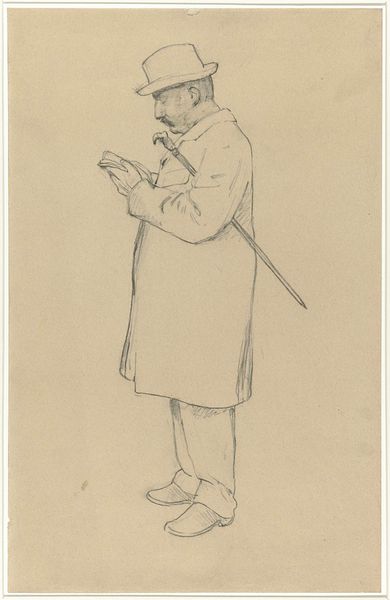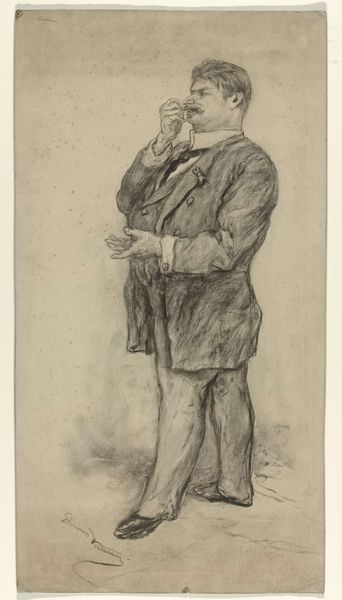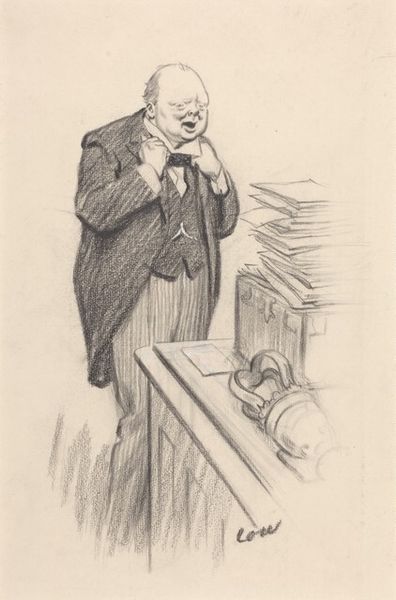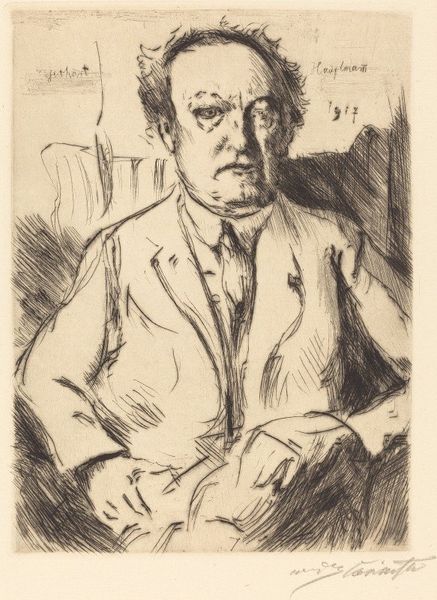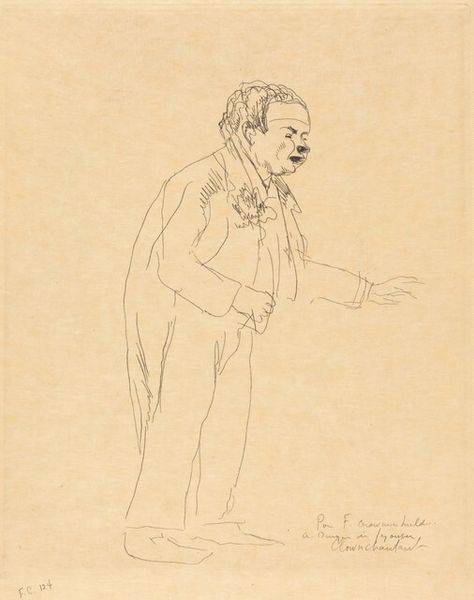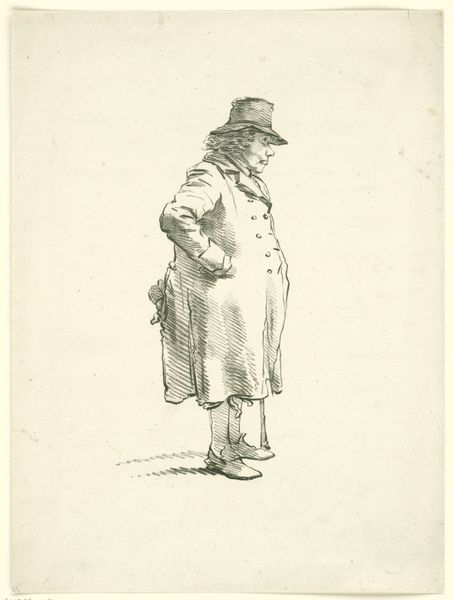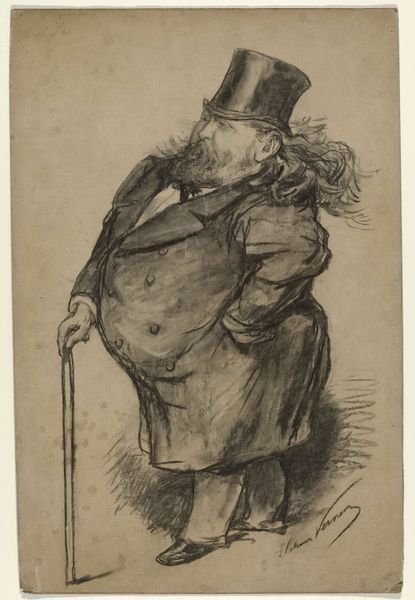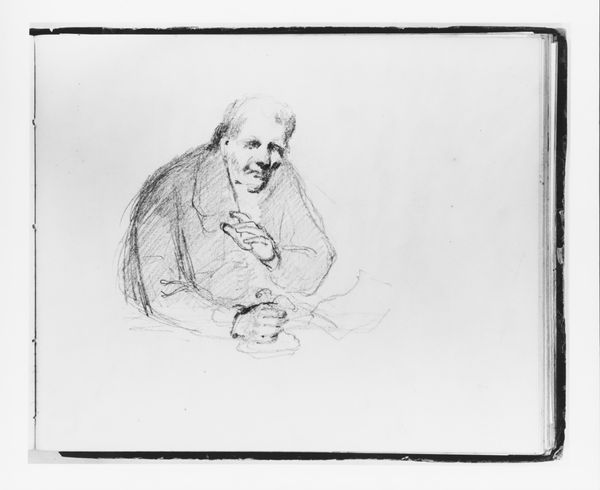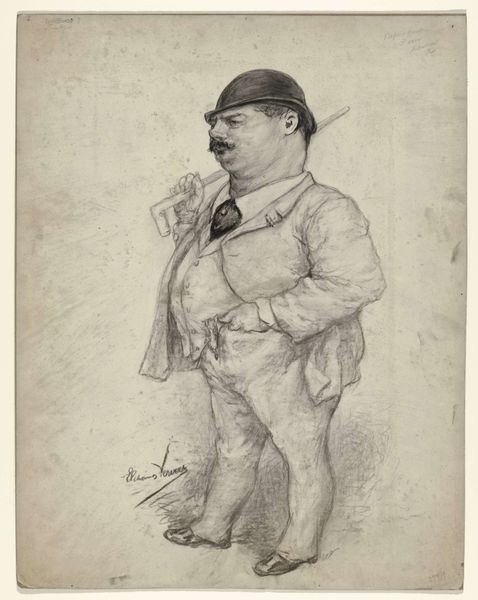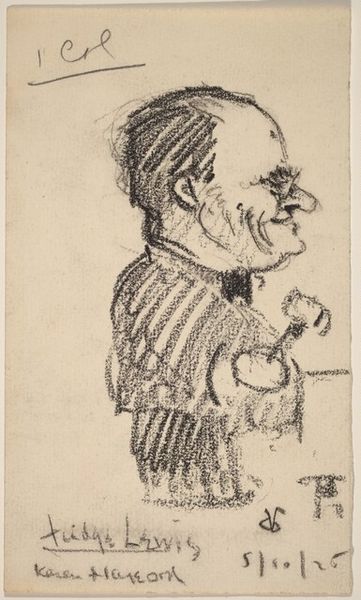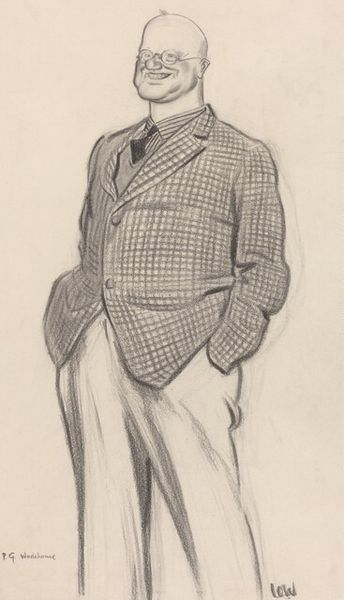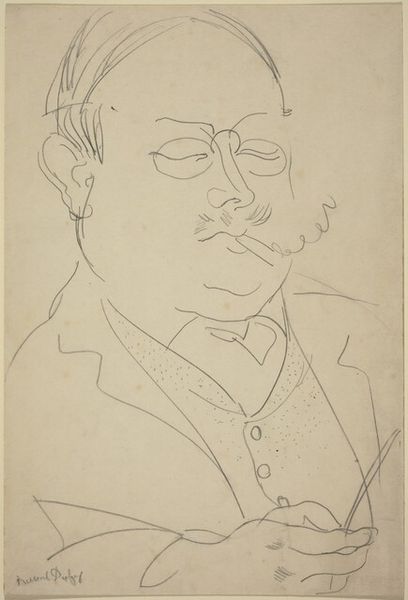
drawing, graphite
#
portrait
#
drawing
#
graphite
#
portrait drawing
Dimensions: overall (approximate): 42.6 x 29.8 cm (16 3/4 x 11 3/4 in.)
Copyright: National Gallery of Art: CC0 1.0
Editor: This is a graphite drawing of G.K. Chesterton by David Low. It feels almost like a caricature because of the emphasis on his stout figure. What jumps out to you about the composition? Curator: Immediately, it’s the dynamic use of line that compels me. Note the loose, almost scribbled quality of the graphite in defining form. The weight and volume are expertly communicated, yet there's an interesting incompleteness. See how Low uses hatching and cross-hatching not to perfectly describe volume, but almost to suggest the idea of volume. Where do you see the sharpest contrasts? Editor: Around his face and hands, I think. That’s where the lines are most defined and there's more shading. Does this choice direct our focus? Curator: Precisely. The sharper lines in these areas, set against the more gestural strokes that define the rest of his body, create a visual hierarchy. Consider, also, the varying weights of the lines. The thicker, darker lines carry more visual weight and create contrast with the light washes, ultimately lending the subject a certain grounded presence despite the sketch-like quality. How does this contrast affect the work as a whole, do you think? Editor: It’s almost as if the drawing is trying to capture Chesterton’s essence rather than aiming for photorealistic accuracy. By focusing on specific elements like the face and hands, and with your pointing out the contrasting line weights, I can now notice the more detailed parts of Chesterton compared to his overall form. I hadn't noticed before. Curator: Exactly! It highlights how crucial close examination is to decipher the intrinsic structural elements within a composition. Line, weight, contrast, and their interrelation dictate meaning beyond mere representation. Editor: Thank you. It makes me realize there’s more than initially meets the eye, like deconstructing it all and piecing together why it works so well.
Comments
No comments
Be the first to comment and join the conversation on the ultimate creative platform.
